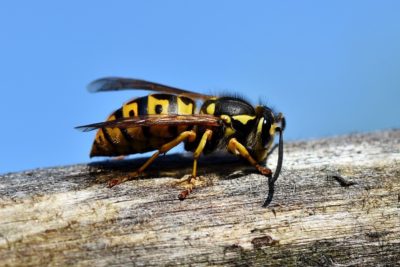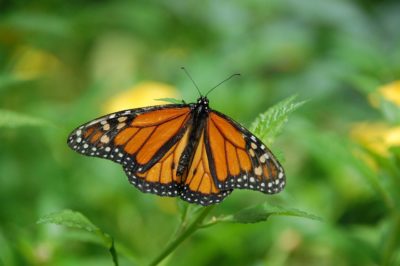Summertime brings warmth and outdoor fun, but also lots of bugs. We’ve got the good bugs and we’ve got the bad bugs. Here are a few of each with a little information about them so if one of them should land on you or crawl on you, you’ll know whether to scream and run or take it easy!
First – a few of the bad bugs:

Assassin Bug: Assassin bugs are found among plants and on leaves and attack their prey by grabbing them with their front legs and stabbing them with their curved beak in order to inject a toxic saliva that liquifies their prey’s tissues. Thankfully, they are usually not aggressive towards people!

House Fly: The good news is that House Flies cannot bite since their mouth is only able to sponge up liquids. The bad news is that they like to hang out in dumps, sewers, and garbage heaps and dine upon fecal matter and discharge from wounds. They are suspected of transmitting over 65 types of diseases to humans. Since they tend to vomit and poop wherever they land – you definitely want to keep them away from landing on you or your food.

Hornets: These guys are the largest members of the Wasp Family and their stings have 3 times the allergic reaction rate to that of Honey Bees or Yellow Jackets. Thankfully though, only 1 or 2 people out of a thousand have any allergic reaction to Wasp stings. Even if you aren’t allergic, their sting is a bit painful (only the female Wasps have stingers – and they can sting repeatedly when angry) so we hope you are a fast runner!

Ticks: Ticks are actually not insects, but are in the Arachnid family (along with Spiders and Mites). Ticks hang out in leaves and grasses and when a tasty host comes by they reach out with their front legs and climb on. They don’t jump or fall from trees. Since Ticks carry lots of diseases, you don’t want one of them to attach to you! Check out this site for information on what to do if you should find one of these nasty little critters attached to you.

Monarch Butterfly: The beautiful Monarch Butterfly is native to most of North America and can travel up to 3,000 miles even though they weigh less than a paperclip! Each autumn, Monarchs will migrate all the way to Mexico for the winter. They lay their eggs in Milkweed plants in the spring and the young caterpillars feed exclusively on Milkweed. As we lose more of their habitat, Monarchs are finding it difficult to find enough Milkweed. Here are a few things we humans can do to help out: limit or eliminate pesticide use on your lawn, plant Milkweed and nectar sources for adult butterflies such as Black-Eyed Susans (our state flower), Aster and Echinacea.

Honey Bees: Honey bees are very social insects and live in large colonies of 10,000 up to 100,000 bees. They are not aggressive toward humans and will only sting if they feel threatened. A Honey Bee colony is very organized and has worker bees, drones, and 1 queen bee. The queen bee’s only function is to produce lots of baby bees! Honey Bees eat nectar and pollen from flowering plants and convert the sweet nectar into honey to sustain the colony. We humans have been enjoying honey (and other bee products such as beeswax) for 8,000 years or more!

Ladybugs: There are about 5,000 different species of Ladybugs in the world and we have 4 different types in our area. Farmers love Ladybugs because they eat many of the bugs that can damage their crops such as aphids, spider mites, whiteflies, leaf beetle larvae and some types of caterpillars. Ladybugs can often be found on crops such as potatoes, corn, peas, beans, tomatoes, and asparagus. Ladybugs can survive our winters in sheltered locations.

Dragonflies: Dragonflies were some of the very first insects with wings to evolve around 300 million years ago! A few Dragonfly fossils have been found with wingspans as large as 2 feet. There are more than 5,000 species of known Dragonflies with 7 of them found in our area. In their larval stage, Dragonflies live in the water and will eat tadpoles, mosquitos, and other larvae. When they are finished with their larval stage they crawl out of the water and their 4 wings will emerge and dry over the next few hours or days. Dragonflies are expert fliers and can fly straight up and down and hover like a helicopter. The adults catch their insect prey by grabbing it with their feet. A Dragonflies eyes take up most of its head which allows it to see every angle except for directly behind it. A single Dragonfly can eat up to hundreds of mosquitos each day and they are completely harmless to humans!
Sources:
- Maryland Department of Natural Resources
- Smithsonian Magazine
- University of Maryland Extension Home and Garden Information Center
Here are a few downloadable books and a movie if you’d like to learn more about bugs!
- Honeybee: The Life of Apis Mellifera
- Explore My World Butterflies
- Snapshot Picture Library: Bugs
- Bugs – Nature’s Little Superheroes (a movie from Hoopla)





